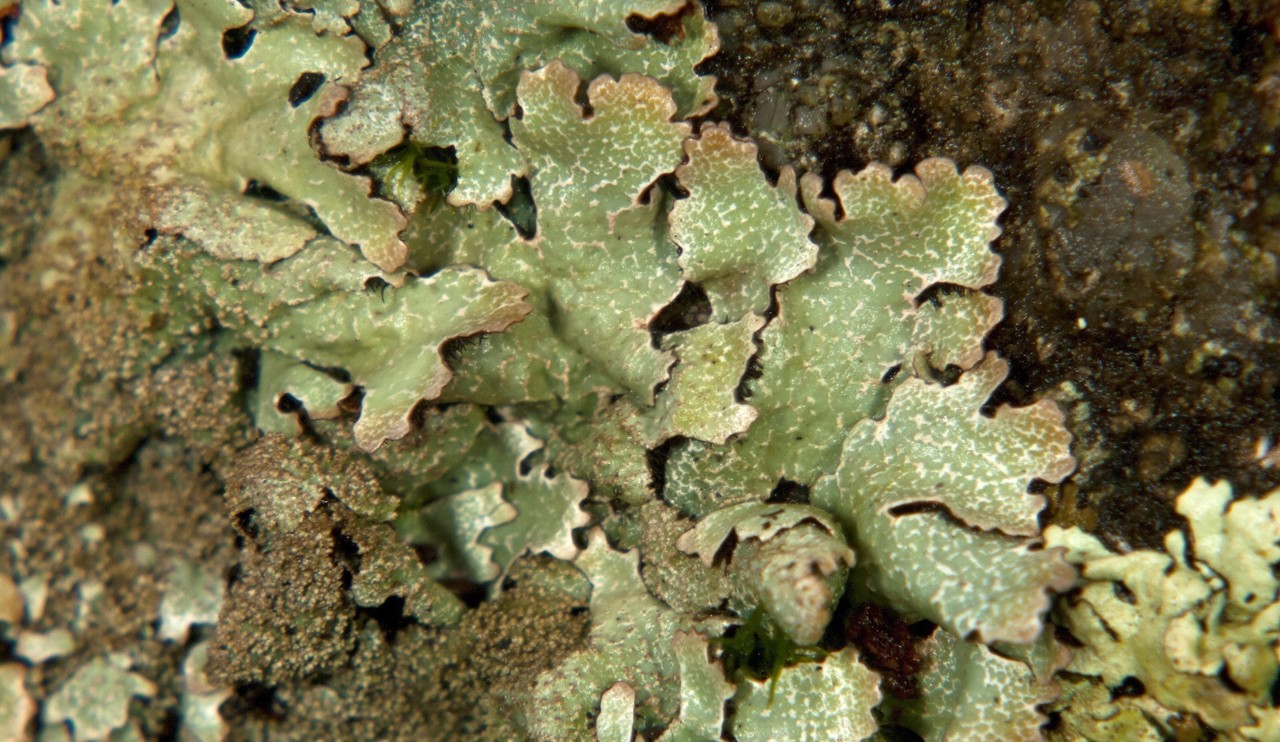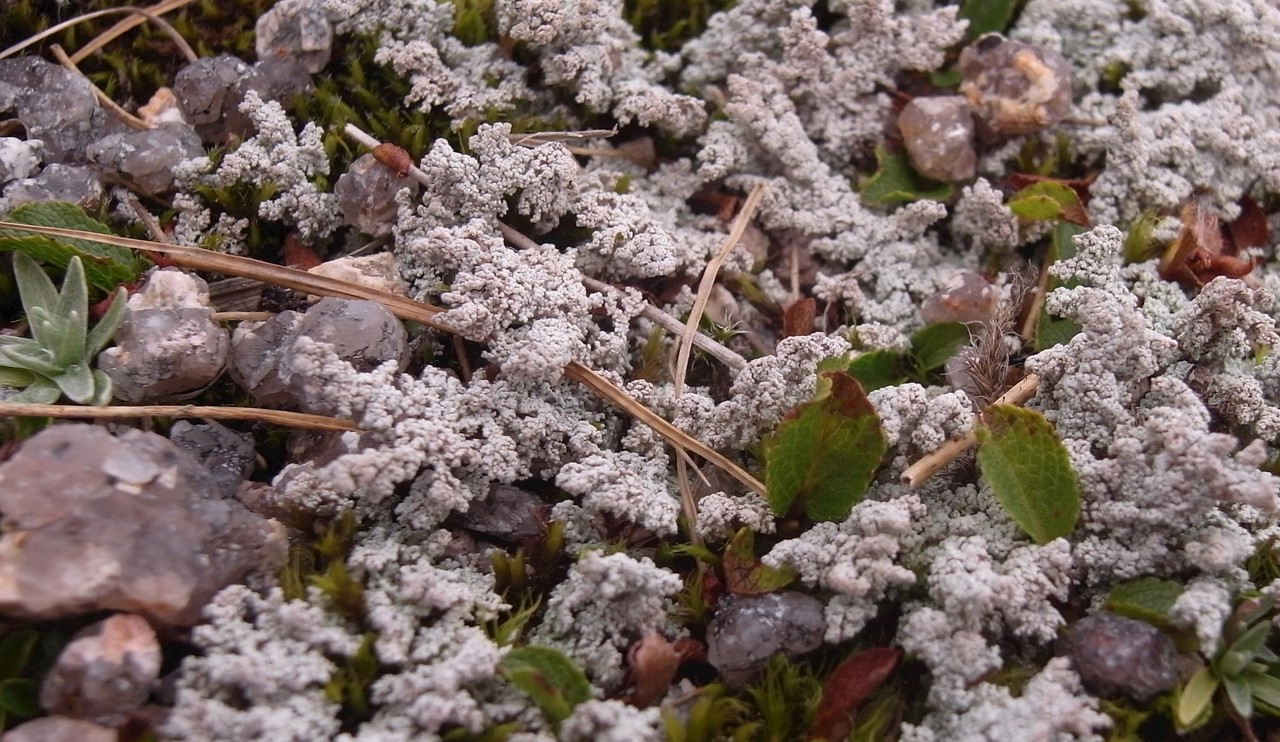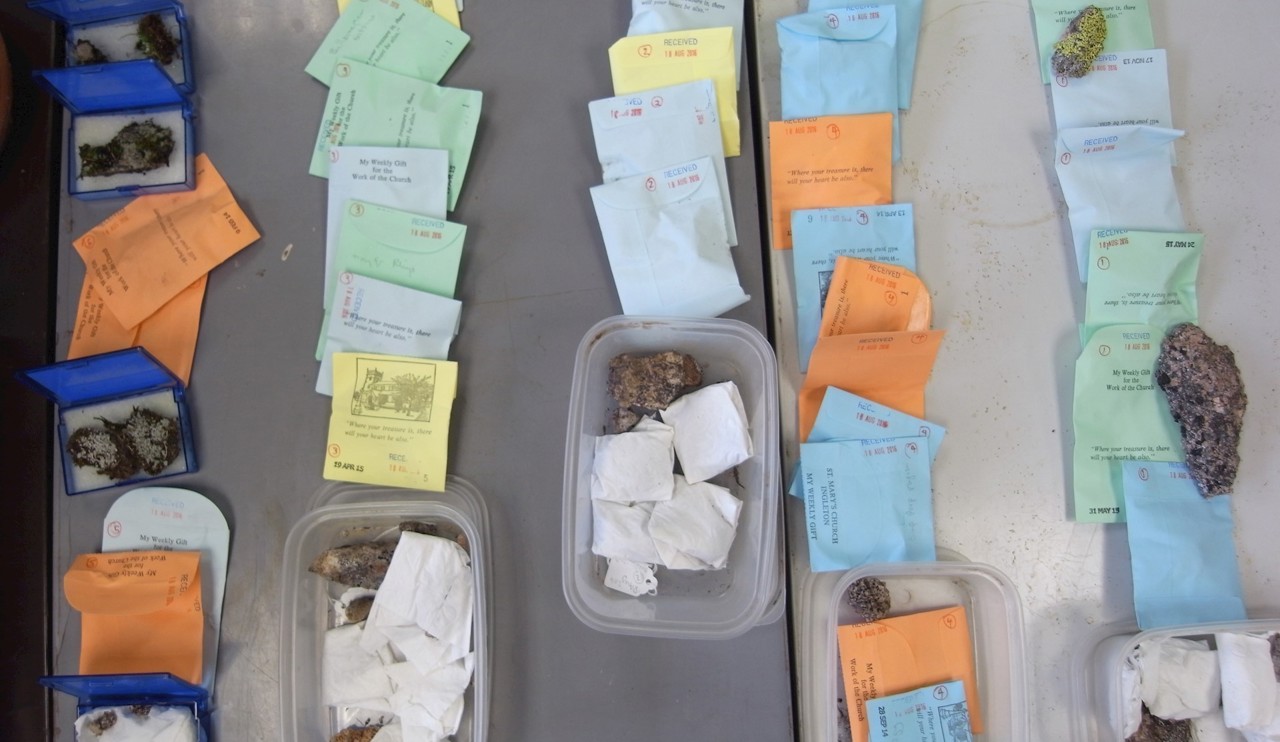Scotland is home to 1500 lichens; 486 UK priority species; 179 internationally important species.
The UK has one of the best studied biotas in the world, including its lichens. RBGE has played a central role in the study of this biodiversity, contributing to its global relevance through important taxonomic outputs.
Today, we help focus conservation action by providing taxonomic clarity on poorly understood species, and by documenting biodiversity in poorly-sampled areas. Using barcoding, population genetics, and next-generation sequencing, we discover the diversity and population dynamics of these important fungi and their photosynthetic partners, algae and cyanobacteria.
Rare and Threatened Taxa
We work directly with conservation agencies to study taxonomy and population dynamics of rare and threatened species. Analysis is currently focussed on taxonomically uncertain and/or conservation priority species. The usefulness of molecular tools in this context was demonstrated for the putative Schedule 8 species Calicium corynellum (Yahr 2015) and is now being extended to taxonomically uncertain species on the Scottish Biodiversity List such as Megalospora tuberculosa, and Pseudocyphellaria species. This improved taxonomy ensures that resources are put to the most effective use in support of conservation action, and monitoring (Yahr et al. 2013).
- Yahr, R. (2015) The status of the conservation priority species Calicium corynellum in the British Isles. The Lichenologist, 47: 205-214.
- Yahr, R., Coppins, B.J. & Coppins, A.M. (2013) Transient populations in the British conservation priority lichen, Cladonia botrytes. The Lichenologist, 45: 265-276.

Cladonia botrytes, the stump lichen, is critically endangered in the UK.
Ecologically Important Groups
Lichens may be small, but they often have large roles to play in their ecosystems: soil stabilisation, water and nutrient capture and cycling (including N-fixation), microhabitat for invertebrates, etc. We work to discover the diversity and dynamics of this important group of fungi, and their symbionts.
Scotland is one of Europe's most important refugia for lichens, with clean air, climatic, geological and topographic contrasts, and non-intensively managed habitats. Our studies range from understanding cryptic diversity hidden within common and widespread species (Corsie & Yahr 2018), as well as for rare and threatened taxa, in addition to the biodiversity of lichen symbionts, including the enigmatic Micarea algae (Yahr et al. 2015), or using NGS to characterise terrestrial ecologically-important cyanobacteria.
- Corsie, E.I. & Yahr, R. (2018) No combination of morphology, chemistry or ecology reliably diagnose members of the Parmelia saxatilis aggregate in Scotland. In press, Lichenologist.
- Yahr, R., Florence, A., Škaloud, P. & Voytsekhovich, A. (2015) Molecular and morphological diversity in photobionts associated with Micarea s. str. (Lecanorales, Ascomycota). The Lichenologist, 47: 403-414.

The Parmelia saxatilis aggregate intergrades morphologically and chemically, but brown pigmented lobe tips often belong to P. saxatilis s. str. in the east of the UK.
Under-explored and Threatened Habitats
Taxonomists play an important role in documenting species distributions at local, regional and national scales. Mountain habitats have been relatively poorly studied because of their inaccessability and the practical difficulty of collecting from rocks. Inventory work at RBGE, supported by molecular biology, is now focused on the threatened montane lichen flora of Scotland, with survey effort centred on the Caingorms National Park and including the taxonomically difficult Rhizocarpon and Stereocaulon species.

Stereocaulon alpinum, in an area of late snow lie, Ciste Mhearad, Cairngorms.
Barcoding for Biodiversity Discovery
We have played a leadership role in the development of DNA barcoding as a tool for investigating fungal biodiversity (Yahr et al. 2016). Our work has contributed to the feasibility of barcoding in fungi across a high percentage of fungal species (Kelly et al. 2011; Schoch et al. 2013), and we employ it for both difficult taxon groups (Truong et al. 2013) and at habitat-level scales.
- Yahr, R., Schoch, C.L., & Dentinger, B.T.M. (2016) Scaling up discovery of hidden diversity in fungi: impacts of barcoding approaches. Philosophical Transactions of the Royal Society B, 371: 20150336.
- Truong, C., Divakar, P.K., Yahr, R., Crespo A. & Clerc, P. (2013) Testing the use of ITS rDNA and protein-coding genes in the generic and species delimitation of the lichen genus Usnea (Parmeliaceae, Ascomycota). Molecular Phylogenetics and Evolution, 68: 357-372.
- Kelly, L.J., Hollingsworth, P.M., Coppins, B.J., Ellis, C.J., Harrold, P., Tosh, J. & Yahr, R. (2011) DNA barcoding of lichenized fungi demonstrates high identification success in a floristic context. New Phytologist, 191: 288-300.

Specimens awaiting processing after a collecting trip.

